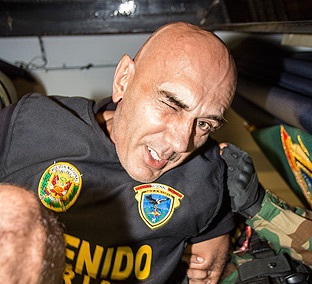Argentina’s request to extradite a Serbian crime boss provides insight into the Balkan mafia’s long tentacles in Latin America — a group that, over the years, has become one of Europe’s main drug trafficking syndicates.
Zoran Jaksic was arrested in July 2016 in Tumbes department, Peru, while attempting to cross the border into Ecuador. The Serbian national is allegedly a leading member of “Group America” or “America Group,” an Eastern European criminal organization that traffics drugs from South America across the Atlantic.
Following Jaksic’s capture, Argentine Federal Judge Morón Juan Pablo Salas requested the 57-year-old’s extradition, PERFIL was told by official sources. The judge had also requested Jaksic’s capture back in September 2008, accusing the Serbian national of being the head of an organization that trafficked liquid cocaine to Europe, PERFIL reported.
SEE ALSO: Coverage of European Organized Crime
Evidence of Jaksic’s criminal activities in Argentina had begun to emerge the previous year, when a Brazilian drug mule was arrested in Ezeiza airport. With time, detectives discovered that Jaksic had created a criminal structure that would buy cocaine from Peru and Ecuador, turn it into liquid form and export it to Europe by sea in “San Juan” wine bottles. He is suspected of smuggling hundreds of tons of cocaine into the Netherlands and Belgium.
An international operation against the network forced Jaksic to flee Argentina. He was arrested in Madrid in 2009 and later extradited to Greece. The Serbian was released, however, and later returned to South America, PERFIL reported.
Peruvian authorities are investigating Jaksic’s possible ties to drug traffickers operating out of one of Peru’s key drug exit ports, Callao, including the detained crime boss Gerald Oropeza.
Various countries had issued arrest warrants for the Serbian convict, who reportedly had over 40 false identities and multiple passports.
InSight Crime Analysis
Jaksic appears to have been an important South American connection for the Balkan crime group as they move their cocaine trafficking operations closer to the source. Eastern European groups have been trafficking drugs from South America across the Atlantic for decades, but since 2004 have step up their role in the international trade, Organized Crime & Corruption Reporting Project (OCCRP) journalist Stevan Dojcinovic told InSight Crime.
Around that time, numerous Balkan traffickers, including Serbians and Montenegrins, came together and began working to transport bigger shipments — of tons of drugs per month — from South America, Dojcinovic said. Today, the Serbians and Montenegrins form one of the main trafficking groups in Europe.
SEE ALSO: Coverage of Criminal Migration
Despite the arrest of some of their top criminal bosses, the Balkans continue to run an intricate network that spreads over multiple continents and connects various criminal organizations around the world. The traffickers mainly buy drugs from Peruvians — their closest contacts — Colombians and Bolivians, Dojcinovic explained. They then ship around 2 metric tons at a time directly to Europe or via South Africa. Spain, the Netherlands and Greece are among their main ports of entry in Europe.
A large part of the drugs are then moved to Italy. The Balkans have a good relationship with the local mafia, who allow them to use the country to sell cocaine to other European organizations in large quantities.
For a long time, the leading figure of the Balkan mafia in South America was Darko Saric, a Serbian-Montenegrin who was accused of trafficking 5.7 metric tons of cocaine to Europe. Saric’s organization was estimated to make up to 1 billion euros ($1.1 billion) a year operating routes through Colombia, Argentina, Uruguay and Brazil, and had ties to Russian, Italian and Colombian crime syndicates. After four years in hiding, Saric turned himself in to Serbian authorities in 2014 and was sentenced to 20 years in prison the following year.
Saric was believed to have ties to Group America, which is one of the Balkans’ South American networks. This organization has been smuggling cocaine into Europe from the early 1990s and has several leaders — although Jaksic is not one of them, Dojcinovic told InSight Crime. The OCCRP reporter explained that Jaksic is allegedly the right-hand man of a Serbian boss known as Mileta Miljanic, who is based in New York City and is a US citizen.
Another important Balkan associate in the Southern Cone was Goran Nesic, alias “Ciga,” who worked both with Saric and Group America. Nesic was reportedly Serbia’s main criminal boss in Brazil, where he spent years supplying drugs to Balkan crime syndicates. He was arrested in the South American nation in 2011.
While Serbian-Montenegrin traffickers have upped their status in South America over the past decade, it is unlikely that they have supplanted the Italian mafia’s local operations, which have been around for decades and span all of Latin America and the Caribbean. A recent EU report still places Colombian and Italian criminal groups at the forefront of cocaine trafficking to Europe.

